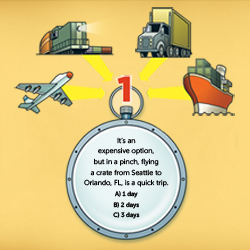|
REGISTRATION REQUIRED
exhibitor q&a
Help!
Booth Cleaning

ILLUSTRATION: MARK FISHER
Q.
My company is beginning to exhibit again. What booth-cleaning procedures should my staff and I follow to keep us and attendees safe?A.
For the last two years, EXHIBI-TOR magazine has reported on the devastating effects COVID-19 and its variants have had on the exhibition industry. Drawing on expertise from resources such as the International Association of Venue Managers (IAVM), the International Association of Exhibitions and Events (IAEE), and the Global Biorisk Advisory Council (GBAC), we've compiled vital information to help face-to-face marketers navigate the pandemic world, including cleaners.Fortunately, today we know much more about COVID, and equally luckily, just as much about cleaners. When it comes to exhibits and how the surfaces and fabrics in them should be cleaned, there is a variety of valuable information available from government sources. While exhibit managers may not always be directly involved in sanitizing the booth themselves, it helps to understand what solvents should be used and how they should be applied. This knowledge can help them confidently assure staffers and attendees alike that all the proper precautions have been taken to keep the booth safe. First and foremost is determining the kinds of cleaners to use. At the worldwide outbreak of COVID-19 in 2020, many cleaners began touting their performance against the corona-virus. In response, the Environmental Protection Agency (EPA) designed a fast-track process for companies to submit their cleaners to the federal organization for testing to see if they were indeed capable of killing the virus on surfaces. If the EPA approved the cleaners, the manufacturers could then add claims to their product labels that they were effective against "Emerging Viral Pathogens" or some similar declaration. Importantly, these cleaners aren't one-trick ponies when it comes to combatting pathogens. The EPA requires that they work in at least one of three areas. The cleaners have to be potent against the coronavirus SARS-CoV-2 (that is, COVID-19); against a pathogen harder to kill than COVID-19 (which might then include one of its variants); or against a different human coronavirus similar to COVID-19. Beyond that, the cleaners are of course suitable for all regular disinfecting and can be used safely in that way as well. Knowing what these cleaners are capable of is important, but equally crucial is knowing where to locate them. The EPA maintains a section devoted to them known as the EPA List N. The list is available online at cfpub.epa.gov/wizards/disinfectants. There you can search among the more than 600 products using a variety of relevant variables, including the EPA registration number on a cleaner's label, its general recommended use (i.e., residential, health care, or institutional), the surface types it's appropriate for (e.g., hard or porous), and by keyword. The more immediate concern most exhibitors have is whether these cleaners are appropriate to use on surfaces that come in contact with food. When you locate a given cleaner on the EPA's List N, you can view the types of surfaces on which you can safely use that particular product. To see this information, click the "+" sign next to a product's registration number and look for the term "Surface Type." If that cleaner is appropriate for use on surfaces that touch food – for example, dishes, countertops, and cooking utensils – the product description in this section will indicate so. We should also mention two important but often overlooked aspects of using these cleaners. First, there's the necessary contact time, aka dwell time. This refers to how long the cleaner should remain on a surface to be effective before wiping it off. Note that dwell times tend to vary widely, ranging from just a few seconds to six or more minutes. Second is the question of how often surfaces that are frequently touched should be disinfected. The EPA suggests surfaces should be cleaned and disinfected at least once per day. Overall, though, the more regularly any given surface is touched by multiple people, the more repeatedly it should be cleaned and disinfected with any of the appro-priate products on the EPA's List N. To that end, the GBAC recommends exhibitors who are concerned about demonstrating to attendees their booths are safe and hygienic might consider increasing the frequency of cleaning often-touched surfaces to every one or two hours when the show hall is open. By following these protocols about cleaning agents, you should be able to give your exhibit a clean bill of health. — EXHIBITOR Staff
Help Wanted Send your tough questions about exhibiting to Ben Barclay, bbarclay@exhibitormagazine.com.
|
|
|
||||||||||||||||||||||||||||
|
|
||||||||||||||||||||||||||||
|
TOPICS Measurement & Budgeting Planning & Execution Marketing & Promotion Events & Venues Personal & Career Exhibits & Experiences International Exhibiting Resources for Rookies Research & Resources |
MAGAZINE Subscribe Today! Renew Subscription Update Address Digital Downloads Newsletters Advertise |
FIND IT Exhibit Producers Products & Services All Companies Get Listed |
EXHIBITORLIVE Sessions Exhibit Hall Exhibit at the Show Registration |
ETRAK Sessions Certification F.A.Q. Registration |
EDUCATION WEEK Overview Sessions Hotel Registration |
CERTIFICATION The Program Steps to Certification Faculty and Staff Enroll in CTSM Submit Quiz Answers My CTSM |
AWARDS Exhibit Design Awards Portable/Modular Awards Corporate Event Awards Centers of Excellence |
NEWS Associations/Press Awards Company News International New Products People Shows & Events Venues & Destinations EXHIBITOR News |
||||||||||||||||||||
|
||||||||||||||||||||||||||||






